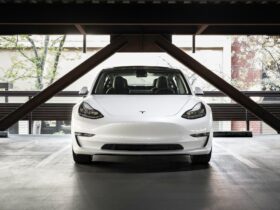Google Bets Big on Texas as the Future of AI Infrastructure
Texas has officially become one of the most important battlegrounds for the global AI infrastructure race. As artificial intelligence demands increasingly powerful data centers, companies like Google, Microsoft, OpenAI, Meta, Oracle, and Anthropic are rushing to secure land, power, and resources. And now, Google has taken a dramatic leap forward with a $40 billion investment that will reshape Texas’ economic, technological, and energy landscape.
In an era where AI models require massive computing power — and even larger energy resources — Google’s Texas expansion signals a larger shift: Big Tech is betting that the Lone Star State will become the epicenter of America’s AI infrastructure boom.
This article breaks down Google’s latest mega-investment, why Texas is attracting the biggest names in tech, and what this shift means for workers, students, the energy grid, and the future of global cloud and AI systems.
Google’s $40 Billion Texas Expansion: What We Know So Far
Alphabet Inc., the parent company of Google, announced plans to invest $40 billion in three new data centers across Texas. This multiyear investment will run through 2027 and significantly expand Google’s U.S. infrastructure footprint.
Where the New Data Centers Will Be Located
Google confirmed three new sites:
- Armstrong County — in the Texas Panhandle
- Haskell County — two separate facilities, including
- one co-located with a new solar plant
- one connected to a battery-energy storage installation
These locations reflect Google’s growing interest in energy-rich rural regions that provide both affordable electricity and large tracts of land — two essential ingredients for modern AI data centers.
Why Google Chose Texas: Cheap Energy, Vast Land, and a Pro-Tech Climate
Texas has emerged as a magnet for hyperscale data centers thanks to a powerful combination of economic, regulatory, and energy advantages.
1. Affordable and Abundant Energy
Texas’ deregulated power grid and large supply of natural gas, wind, and solar energy make it one of the cheapest states for high-demand computing operations.
2. Massive Available Land
Data centers require enormous physical campuses. Rural Texas offers sprawling acreage at lower costs than tech-focused states like California or Washington.
3. A Pro-Business Government
Texas leadership openly courts Big Tech investments.
As Governor Greg Abbott declared:
“Texas will be the centerpiece for AI data centers for Google… Texas moves at the speed of business.”
His message was clear: Google — and any other tech giants — will find a regulatory environment that encourages innovation, rapid development, and long-term expansion.
Google’s Investment Will Create Jobs and Accelerate Technical Training
In the announcement, Google CEO Sundar Pichai emphasized the company’s commitment to building not only infrastructure but opportunity.
Google Says the Investment Will Bring:
- Thousands of new jobs (construction, engineering, maintenance, logistics, security, and operations)
- New training pathways for college students and electrical apprentices
- Community energy-affordability programs
- Support for local infrastructure and workforce development
Google.org, the philanthropic arm of the company, will also fund an electrical-training and AI-skills program, helping Texas grow its pool of skilled technicians, electricians, and data-center operators — roles that are becoming essential in the AI era.
Why AI Companies Are Flooding Into Texas
Google isn’t alone. Texas has quickly transformed into the primary staging ground for the next generation of AI infrastructure.
Recent Big-Tech Investment Announcements Include:
- Anthropic: $50 billion in U.S. data center expansions — including Texas
- OpenAI, Oracle & SoftBank’s Stargate project: First facility in Abilene, with more to come
- Meta: A gigawatt-sized data center (1 GW can power 750,000 homes)
- Microsoft: Nearly $10 billion committed for Texas-based computing capacity
- Fermi Inc.: Plans for four nuclear reactors for a private data-center campus
Each company is racing to secure the infrastructure needed to train larger, more powerful AI models. Texas offers the ideal environment to build at scale.
A Solar-Powered Data Center? Google Plans to Ease Pressure on the Grid
One of Google’s Haskell County facilities will be built alongside:
- a new solar plant
- a battery-energy storage site
This hybrid system serves a crucial purpose:
It reduces the strain on an already-stressed Texas grid.
Texas has faced growing concerns over power demand from industrial users, data centers, and crypto miners. Google’s decision to pair renewable energy with battery storage is a strategic attempt to expand responsibly — and set a new benchmark for building sustainable, AI-ready data centers.
Google Takes an “Energy-First” Approach to AI Infrastructure
In its announcement, Google emphasized three key commitments:
- Adding new energy resources to the Texas grid
- Paying for the energy costs of its operations
- Supporting community-based energy-efficiency initiatives
As AI workloads explode, tech companies can no longer ignore the environmental and economic impacts of high-demand data centers. Google’s pledge reflects dawning industry awareness:
AI’s future depends heavily on sustainable power.
Google’s Global Expansion: Texas Is Just the Beginning
Google’s Texas investment comes amid a massive global spending surge. The company is expected to spend over $90 billion in capital expenditures this year — a dramatic increase driven by:
- Custom AI chips
- Massive data-center construction
- Cloud-computing infrastructure
- High-performance AI clusters
Google’s Recent Global Megaprojects
- $15 billion for a new AI infrastructure hub in southern India
- $6.4 billion for computing resources in Germany
- $6.5+ billion for AI capacity in the United Kingdom
- Over $40 billion in ongoing U.S. expansions
- A new wave of custom AI hardware (TPUs, data chips, accelerators)
The spending proves one thing clearly:
Google is aggressively positioning itself for AI dominance far beyond search advertising.
Why Google Needs These Data Centers Now More Than Ever
Three major trends explain why Google is investing so heavily:
1. AI Models Are Becoming Enormously Resource-Intensive
Training next-generation models requires:
- powerful GPUs
- custom chips
- liquid-cooling systems
- enormous electricity supplies
- millions of square feet of server capacity
2. Competition from OpenAI and Anthropic Is Exploding
With ChatGPT, Claude, and Llama rapidly evolving, Google needs the infrastructure to catch up and surpass its rivals.
3. Cloud Revenue Depends on Infrastructure Scale
Google Cloud is one of the company’s fastest-growing businesses.
More data centers = more enterprise AI customers.
Texas Becomes the New Heart of America’s AI Race
With tech giants announcing one mega-investment after another, Texas is emerging as the new Silicon Valley for AI infrastructure.
Texas Offers a Rare Combination of Advantages:
- Competitive energy costs
- Huge amounts of land
- Accessible transportation networks
- A business-friendly environment
- Rapid permitting processes
- Growing workforce pipeline
The state is now positioning itself not just as a home for data centers — but as a central hub for the AI revolution.
Google’s $40 Billion Leap Signals a New AI Infrastructure Era
Google’s commitment to invest $40 billion in Texas data centers marks far more than a regional expansion — it represents the beginning of a new chapter in global AI development. These facilities will power everything from advanced cloud computing to next-generation AI systems, fueling innovations that will shape industries, jobs, and economies.
At the same time, the investment sends a clear message:
Whoever controls the infrastructure will control the future of artificial intelligence.
Texas, with its energy resources, land capacity, and pro-tech policies, is becoming the cornerstone of that future. And as companies like Google, OpenAI, Meta, Microsoft, and Anthropic pour billions into the state, the AI revolution is shifting decisively to the American Southwest.
For workers, students, and local communities, this could spark a wave of job creation, training programs, and economic opportunity. For the tech sector, it’s a race to build faster, smarter, and more sustainable data centers. And for investors, it signals the long-term seriousness with which Big Tech is approaching AI’s global expansion.
One thing is certain:
Google’s Texas investment is not just big — it’s transformational.






